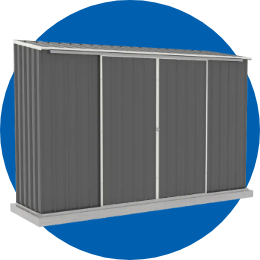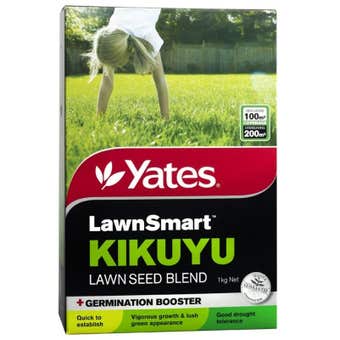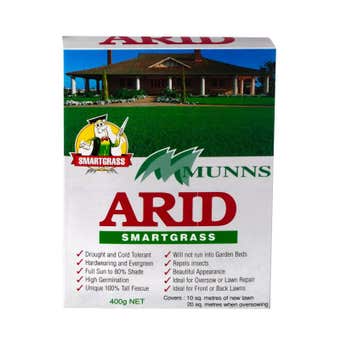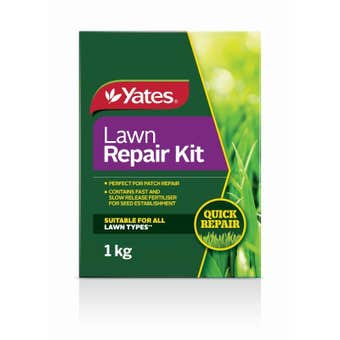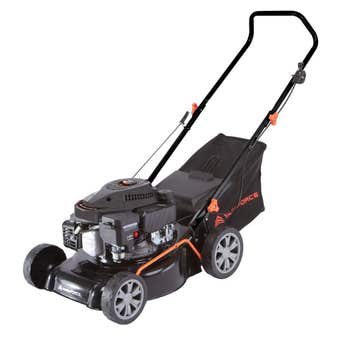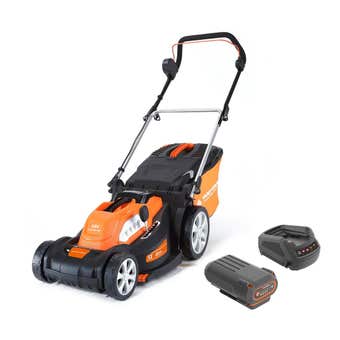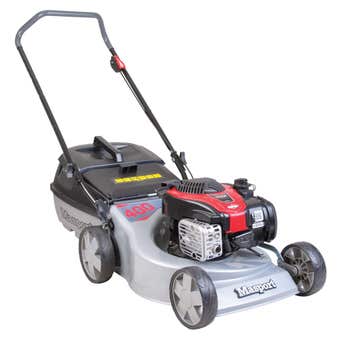- 23 December 2023
How to grow grass from seed: Tips for planting & laying new lawn
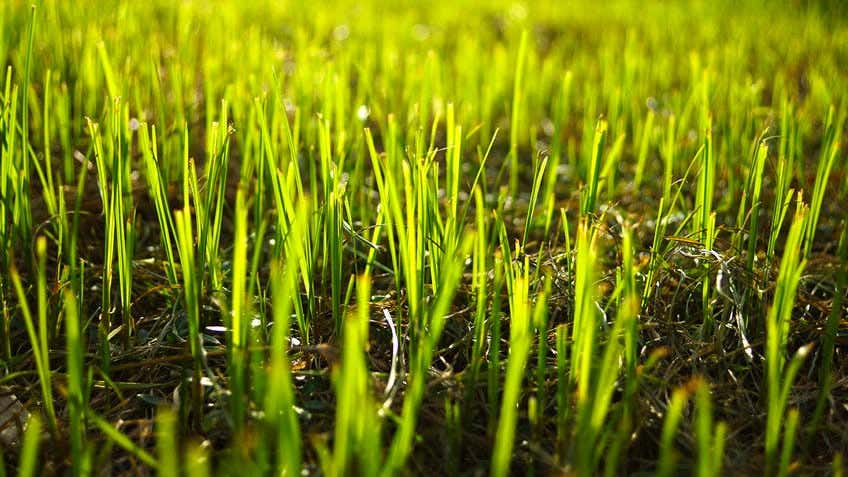

Your Materials Checklist
How to grow grass from seed
Step 1: Planning your perfect lawn
A crucial step in learning how to grow grass from seed is planning. When designing your lawn, avoid narrow corners or peaks that are difficult to mow, opting instead for groundcovers or bark mulches.
Aim for a broad expanse of lawn rather than fragmenting the area with multiple small garden beds, which complicate mowing. Keep in mind that your lawn should integrate seamlessly with paths, gates, fences, pools, and other established points. Try to avoid overly shaded areas, as most grass species prefer sunlight.
For shaded spots, consider alternatives like paving or bark chips. Sloped areas are better suited for ground covers, which require less maintenance and hold the soil effectively.
Timing Is Everything: The best periods for planting are in spring or autumn, as the extreme conditions of summer and winter can impede successful germination. In Australia, autumn is often the ideal time, as young grass planted in spring might struggle through the hot summer.
Step 2: Choosing the right type of lawn


Understanding how to plant lawn grass begins with selecting the right grass variety for your climate and soil type. Consider whether your lawn is for aesthetic purposes or will it need to withstand active use, like children's play.
1. Sun-loving grasses:
- Bermuda Grass: Ideal for sunny areas, this grass is durable and can handle high traffic, making it perfect for family yards.
- Zoysia Grass: A good choice for full sun, Zoysia is drought-tolerant and offers a dense, carpet-like lawn.
2. Shade-tolerant varieties:
- Fescue Grass: Excellent for cooler climates and shaded areas. It's known for its fine texture and deep green colour.
- St. Augustine Grass: Suitable for warmer climates, this variety thrives in both sun and shade, offering a thick, lush lawn.
3. Drought-Resistant Types:
- Buffalo Grass: This variety is known for its ability to withstand drought conditions, making it a great choice for water-conserving landscapes.
- Ryegrass: A popular choice for its quick germination and growth, ideal for overseeding existing lawns or creating new ones in cooler climates.
4. Low-maintenance alternatives:
- Dichondra: For a no-mow option, Dichondra is an excellent ground cover, forming a dense mat of small, rounded leaves.
Each type of grass has its unique characteristics and suitability for different environments. Consider your local climate, soil type, and how you plan to use your lawn when choosing the right grass variety. Explore a range of grass seed mixtures.
Step 3: Site preparation - Laying the foundation
The success of your lawn depends very much on proper preparation. This includes cultivation, drainage, soil improvement and grading or levelling. The objective is to have a firm, granular, well-drained, weed-free soil that is neutral or slightly acid.


Cultivation
Use your mattock or pick to first remove all stones, rocks, big lumps of clay and other rubble. Cultivation (digging and turning the soil over) will destroy most annual weeds, and ‘Zero’ or ‘Round-Up’ can be used to kill more persistent varieties. Dig the soil to spade depth – about 15cm.
If it’s a large area or clay soil, you’d be better off hiring a rotary hoe. It will also help if you water the area the day before you dig or rotary hoe. Water the newly dug soil well and leave it for a few weeks.
This will allow weeds to come up so you can kill them before sowing your lawn seed.
Drainage
Look to see if water is draining away satisfactorily next time it rains, or if it lies about. If drainage is poor, lay in some Agi Pipe or Slotted Drain Pipe now. Poorly drained lawns develop problems with mosses and other water-loving weeds which will give you years of trouble. For a small site, only one drain running across the middle and following the natural fall of the land is needed.
For larger areas, set feeder drains at an angle of about 40 deg. Set drain lines about 22cm deep and fill to near the surface with 6mm gravel or crushed rock, then sand.
Soil improvement
If you have heavy clay soil, now’s the time to improve soil structure and water penetration by applying gypsum at 1 or 2kg per sq. metre. Top dress this with about 5cm of sandy loam and cultivate to about 10cm deep.
Use your pH Soil Test Kit to check the soil acidity. Many soils are too acid (sour) for good growth and an acidity reading below 6.0 means the soil should be treated with garden lime to correct it. Apply the lime at about 200g per sq. metre.
Also, add a complete lawn fertiliser to stimulate weed growth that otherwise may not appear until after sowing.
Grading
Level off high spots and fill hollows either by using your garden rake or by attaching a rope to a heavy board and dragging it over the site.
If a heavy board isn’t handy, fasten several lighter ones together. Your drag rope must be attached about 7 or 8cm back from the front edge. If it’s too far back, the front edge will bite too deeply. If it’s too far forward, the board will just skim the surface without scraping off the bumps. Make sure the soil is not too compacted though. If it feels spongy underfoot, dampen it and give it a good rolling or systematically tread the soft spots to consolidate them.
Step 4: Sowing your seed


To begin, use a starter-type fertiliser even if your seed mixture contains a small amount of release fertiliser. Follow the instructions on the pack and rake into the surface.
Seed should be placed at a fairly shallow depth, generally about 5 to 10mm below the surface. Use your metal rake to make shallow grooves in the soil, then scatter seed evenly over the area. Sow half your seed in an east-west direction, and the remaining half in a north-south direction. This will ensure a more even coverage. Lightly smudge across the surface with a piece of timber to bury the seed in the groove and firm down the surface with your rake head. Don’t worry if the seed is not all covered.
To ensure even sowing, try mixing your seed with dry white sand if your soil is dark, or a black sandy loam for light coloured soils. Mix about one part seed with three parts of the bulk material. The different coloured materials make it easier to see where you have been and where you have missed and help to prevent too much seed being dropped in one place.
Step 5: Watering


After sowing, it’s essential that the soil surface is kept continually moist using the finest of sprinklers – heavy watering may cause run-off and wash away some of the seed resulting in patchy growth. Water twice a day to ensure that the soil does not dry out.
Some grasses – particularly ‘Ryegrass’ – germinate within a week under good conditions. Others can take two-three weeks. As the grass grows, reduce watering – in the second week you should water once a day, in the third week, every second day. Twice a week should be ample by the end of the first month. After three months, give your lawn a weekly soaking, except in very hot and drying weather on very light sandy soils.
Step 6: Mowing


Do not begin mowing until your new grass is about 6cm high. Mower blades should be sharp and you should remove no more than 1/3 of the grass length at one time, or use a blade length no lower than 4cm. On future cuts, you can gradually lower the blades, but remember – longer lawns give healthier growth and look more luxurious.
Step 7: Maintaining a green lawn


Feeding
Apply a solid or liquid fertiliser at least 2-3 times a year. Follow directions carefully and water in well to totally dissolve the fertiliser, or you could end up with brown patches or, worse, kill the grass completely.
Watering
One deep, uniform soaking per week is usually all a lawn needs, even in hot dry seasons.
Weed & Disease Control
Most weeds can be controlled with a selective weed killer. Some, like Yates ‘Weed ‘n’ Feed’, also fertilise at the same time. Hormone weed killers, such as ‘Zero’ and ‘Round-Up’ should not be used on lawns less than two months old.
Mowing
Generally, aim to cut no lower than 2-3cm. Cutting at almost ground level is a sure way to kill your lawn and encourage weeds.
Acidity
Use your pH Soil Test Kit to test for acidity each year. If the pH reading is 6.0 or lower, apply garden lime.
Aerating
This helps to improve fertiliser and water penetration. Use a hollow tined lawn corer or jab a garden fork into the soil as far as the tines will go. If you do this in spring, less frequent and more effective watering is possible during summer.
By following these steps and understanding how to grow grass from seed, how to lay lawn, and how to maintain its lush green appearance, you can create a beautiful and resilient lawn that enhances your home's outdoor space.






